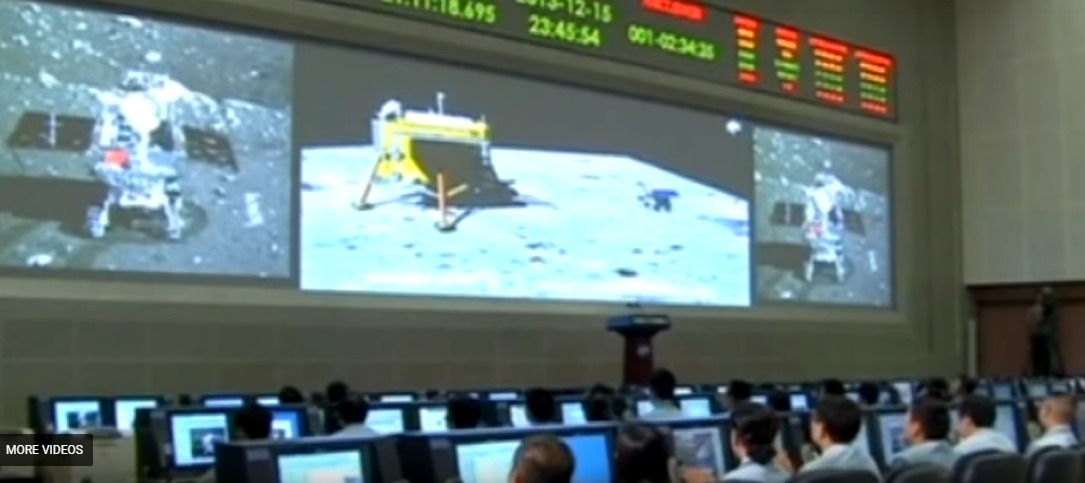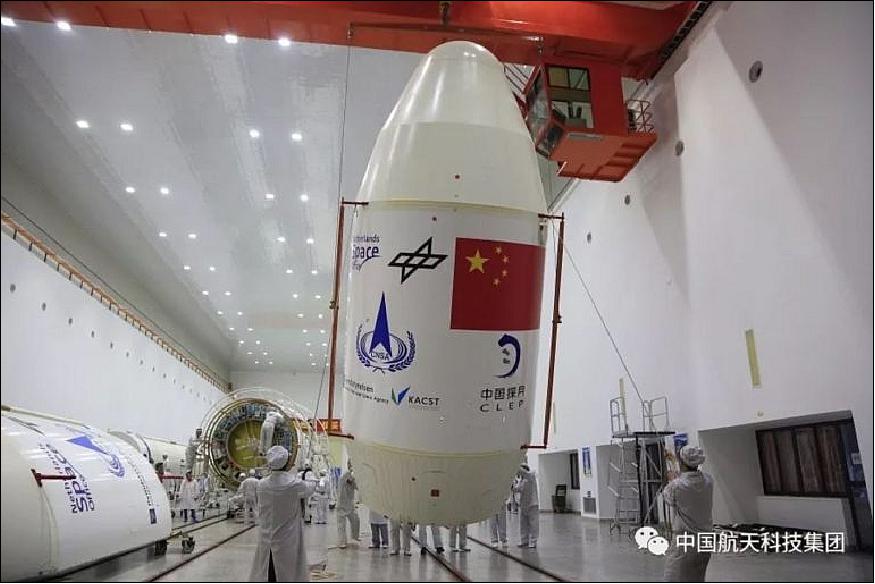
ST. GEORGE — On Wednesday, a Chinese lander named after an ancient moon goddess touched down on the far side of the moon, a region never fully explored by man or machine — until now.

Launched Dec. 7, 2018, China’s Chang’e-4 mission rover has become the first to land on the far side of the moon after its successful touchdown last week. The landing has been hailed as a major technical feat and an important step towards China’s wider aspirations in space.
The mission is named after one of China’s most famous folktales, in which a woman named Chang’e flew to the moon after consuming an elixir of immortality and then chose to live in a palace on the moon to be closer to her husband on earth.
The robotic probe blasted from Earth and entered orbit around Earth’s celestial partner, aligning with the lunar surface Dec. 12 in preparation for Wednesday’s landing, according to the China National Space Administration.
China’s three-year lunar mission employs an orbiter, a robotic lander and a rover.

The rover touched down near the Aitken Basin of the moon’s south pole region, a vast impact region in the southern hemisphere of the moon that is 8 miles deep and more than 5,500 miles in diameter — it’s been explored from orbit, but never from the surface. It is also the largest impact basin on the moon and one of the largest in the Solar System, which is one of the reasons it’s important to researchers across the globe.
In fact, scientists recently discovered that the region also contains vast amounts of water ice, thought to be delivered to the surface when meteors and asteroids impacted the moon, leaving the ice to remain frozen in a region that is permanently shadowed.
Wednesday’s landing is significant for several reasons, the first being that landing on the far side of the moon presents enormous challenges. Since the moon is tidally locked with Earth, it rotates around its axis at about the same time it takes to complete one full orbit around the planet, according to China Daily. This means that earthlings only see half of the moon at all times, a side referred to as the near side of the moon. It’s the only region to have been explored by humans due to its direct line of sight with Earth, making communication with ground control possible.
Unlike on the near side, landing on the dark side of the moon requires multiple spacecraft working in tandem, and in addition to the lander itself, some type of probe near the moon is needed to relay communications from the lander to Earth.
China accomplished that feat in May 2018 with the launch of Queqiao, a satellite specifically designed to aid in establishing communications between the lunar surface and Earth, a priority for the Chang’e-4 mission. After a month in space, the satellite was nestled into a spot more than 37,000 miles from the surface facing the far side of the moon.

The relay satellite spins around within a Lagrange point, a sort of parking spot for spacecraft, where it will remain to maintain communication between the spacecraft and Earth using a large curved antenna.
While the mission will not be returning any materials to earth, there will be intense study on the lunar surface itself.
The rover is equipped with descent and terrain cameras, a panoramic camera and subsurface penetrating radar to detect the near surface structure of the moon. It also sports infrared and other spectrometers capable of analyzing chemical composition to help scientists determine what the surface is made of, according to the China National Space Administration.
The lander is also equipped with an important scientific payload designed specifically for the far side of the moon — a low-frequency radio spectrometer. Since the far side is shielded from electromagnetic interference from the Earth, it makes for an ideal place to study solar bursts.
This allows the probe to “listen to the deeper reaches of the cosmos,” Tongjie Liu, deputy director of the CNSA’s Lunar Exploration and Space Program Center, said in a statement in January 2018.
China enters the major leagues of lunar exploration
China is one of only three countries that have landed a spacecraft on the surface of the moon. The other countries include the U.S. with the Apollo missions and the former Soviet Union, which landed robotic spacecraft on the lunar surface.

China entered the melee in 1970 when it launched its first satellite to reach orbit. The country has steadily improved its technology and expertise over the years and is now a major league player in space exploration.
Among the four Chang’e missions that first launched in 2007, China has delivered a series of payloads that include two robotic spacecraft launched into orbit, two rover-lander duos dropped onto the moon’s surface, a relay satellite placed in a stable Lagrange point beyond the moon and a prototype capsule sent on a round-trip mission around Earth in eight days.
That prototype capsule is the forerunner to the design of a container that will house lunar material on the Chang’e 5 sample-return mission, which could launch this year.
China’s rise in space exploration can be seen in the 39 orbital launches that took place in 2018 alone, more than any other country, with the U.S. coming in second at 31 launches.

And China’s meteoric rise doesn’t stop there. Inspired by the thousand-year-old fairy tale of Chang’e, China wants to build a real-life manned lunar palace on the moon and has even completed a mock study titled “Lunar Palace I” that ended in April 2018, according to Space.com.
However, such goals remain unofficial at the moment.
“The Chinese still work according to five-year plans. And we’ve seen no indication that the next five-year plan — 2021 to 2025 — has a manned (lunar) mission involved,” Dean Cheng, senior researcher at The Heritage Foundation and expert on China’s space program, told Space.com Wednesday.
Email: [email protected]
Twitter: @STGnews
Copyright St. George News, SaintGeorgeUtah.com LLC, 2019, all rights reserved.
I heard they landed in a parking lot of one of the big box stores …next to one of the international coffee houses